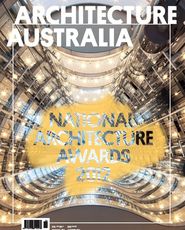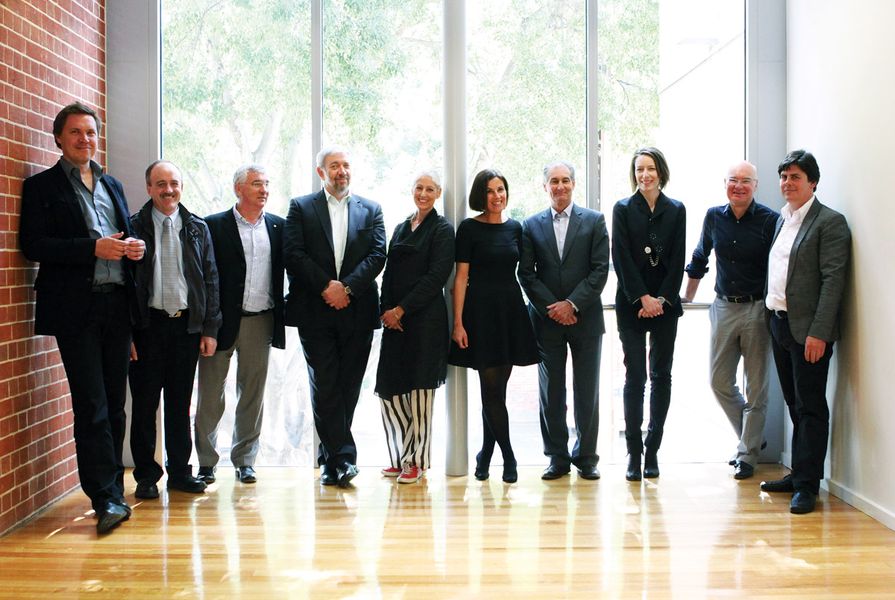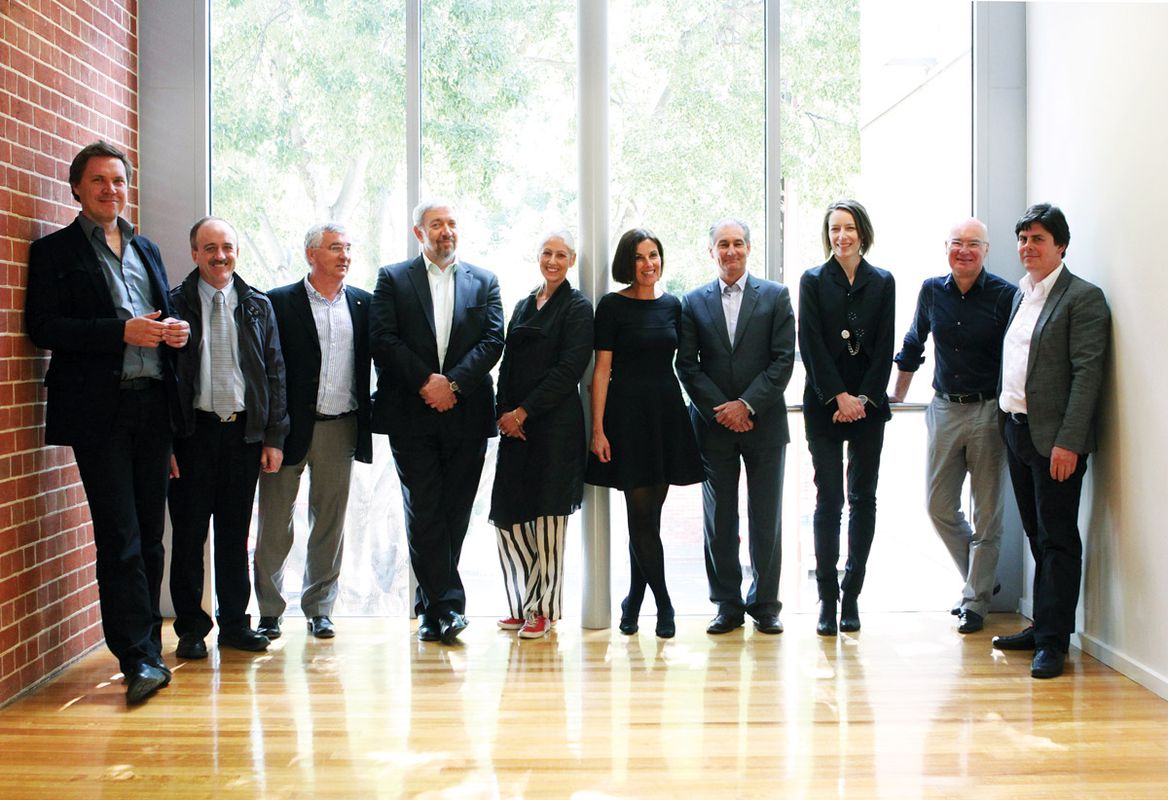At the beginning of 2012, each Australian state and territory was represented by a government architect or equivalent. By mid year the picture was less rosy. There was uncertainty surrounding the government architect’s position in South Australia (prompted by the proposal to disband the Integrated Design Commission SA) and a severe lack of support for the Queensland Government Architect role by the then newly appointed Liberal National Party. In Tasmania the state government continues to hold back on filling the position, left vacant by Peter Poulet.
Earlier in 2012 following his move from Tasmania, Poulet took up the leadership of the New South Wales Government Architect’s Office. Since its establishment in 1816, this office has weathered many changes in political will, and of late has anchored the creation of new positions in other states. It is charged with advisory and statutory responsibilities, which ensures an ability to influence its government’s policies concerning the built environment. And although it sits within government, it receives income generated by projects it undertakes on a commercial basis.
In late 2011, incoming state premier Jay Weatherill announced the closure of the Integrated Design Commission SA, which caused considerable concern. This was tempered by the subsequent announcement of the creation of the Office for Design and Architecture SA (ODASA), which will operate under the leadership of South Australian Government Architect Ben Hewett. The breadth of its declared intention to include the broader discipline of design suggests a new model for the government architect’s office that may have an enduring and far-reaching effect.
No such balancing initiative seems likely in Queensland, where the position of the government architect appears extremely vulnerable in the light of the sweeping restructuring that the state government has instigated across the public service. The incumbent Queensland Government Architect, Malcolm Middleton, reports that he has lost support staff, budget and travel entitlements. Further, the reporting structures for the government architect are uncertain while relevant departments are recast, further reducing the effectiveness and visibility of the position. Many advances made since the creation of the position in 1999 are at risk. Funding and staff support have been removed from Queensland’s Board for Urban Places, and the Architectural Practice Academy is a possible further target for cuts. Yet the new government is clearly in need of advice for the signature projects that it wishes to promote. It has appointed advisory panels to assist, without reference to the government architect.
Other states and territories are relatively secure, especially Victoria, where premier Ted Baillieu is a registered architect (and a former contributor to Architecture Australia). The Office of the Victorian Government Architect (OVGA) is well structured and led with clear purpose by Geoffrey London, formerly the Western Australian Government Architect, a position now held by Steve Woodland. Leadership is provided in Canberra by Alastair Swayne (with co-funding from the University of Canberra). In the Northern Territory, Steve Thorne, chairman of the Urban Design Advisory Panel, is supported by Robert Foote, chief architect within the Northern Territory Department of Construction and Infrastructure.
Despite the wavering of support in some states, much has been achieved in the key areas of design advocacy and design quality, and in heightening the understanding of the need for improved procurement and management policies for public projects.
In several states the use of desktop reviews of project proposals tied to accelerated approval processes has been welcomed by industry. Similarly, the general introduction of improved competition and design selection processes has been mostly supported by the profession. A promising initiative is the publication being prepared by the OVGA, titled Government as “Good Client,” intended to provide guidance and advice to government departments on how to enable quality design outcomes for built projects through a range of contractual and delivery methods.
Many states and territories have allowed the broadening of the membership of project review panels to draw in more representatives from the profession. Queensland’s Board for Urban Places, the Northern Territory’s Urban Design Advisory Panel and the Victorian Design Review Panel all illustrate the value of a breadth of experience and insight being brought to bear.
Greater community interest and public concern about key sites and projects have increased the value of the government architects’ role in each state and territory as the respective ministers have been driven to seek expert, informed and relatively independent advice, especially where there is the likelihood of controversy.
The advocacy model stems from that initially established in Queensland to offer pertinent, independent advice to assist government as it shaped its objectives, and to address the nature and needs of the design of major public projects. Such advice guided into place the designs for the Gallery of Modern Art and the remodelled and extended State Library of Queensland, and assisted in the inception of other major public projects. Despite the various advances and contributions, there are limitations inherent in the advisory/advocacy approach adopted for those government architect positions created in the last decade or so.
The initial Queensland appointment was part-time — effectively one day a week — which severely restricted its scope. There was little opportunity to engage with the internal mechanisms of government or to lobby with sufficient strength to overcome procedural obstacles. Despite these limitations, the visibility and achievements of the position helped strengthen the efforts made in other states to create equivalent positions. Western Australia1 and Victoria, in turn, influenced the formation of positions in the other states and territories.
The necessity of focusing available time, effort and resources on key pressure points was described by Paolo Tombesi as leading to an “urban acupuncture” of critical effect.2 Yet, if they are not considered essential to the shaping of government policy, the advice and recommendations arising from such targeted advocacy may be readily dismissed as merely cosmetic. This vulnerability has been revealed in those states where the viability and effectiveness of the government architect’s role has already been eroded and whose viability is a continuing concern.
A measure of resilience has been provided by the Government Architects Network Australia (GANA), formed in 2004 to share information between the various government architect offices. At its most recent meeting in 2012, hosted by Robert Foote in Darwin, strategies to strengthen the network were discussed, including the sharing of documents and intelligence
concerning procurement policies, design review protocols, projects and initiatives across the jurisdictions via a common website. Further, it was agreed that projects of national significance and scale that the GANA members could address jointly would be identified in order to increase the visibility, coherence and effectiveness of the group.
It has long been suggested that there is a need for an Australian government architect, who would provide leadership at a national level. This idea has been pursued vigorously by the Australian Institute of Architects, guided by a formal policy on the nature of the position adopted in 2008. Greater weight for such an initiative would be available if GANA could draw on proven outcomes, strategies and achievements to focus shared efforts on national issues, effectively providing an initial structural resource for a federal government architect’s position.
Recent events have revealed just how vulnerable the government architects are to shifting political sands — the government architect office seems like an easy budget cut. To ensure that the government architect positions survive it is crucial that government architects work together to provide unequivocal evidence of the value that they have delivered in enhancing the quality of public architecture and civic space. Despite the many gains made through the generation and adoption of key design policies and in the leadership of consultative processes, it will be the contributions to the shaping and execution of major projects that will attract most attention within and beyond government. A breadth of informed advocacy is necessary to ensure that the government architect positions are regarded as essential to the shaping of objectives and policies related to the built environment across the nation.
1. Leon van Schaik, G. London, B. George, Procuring Innovative Architecture (New York, Oxon: Routledge, 2010), 123.
2. Paolo Tombesi, “The Architecture of Machiavelli: Government Architects in Australia,” Architecture Australia, vol 95 no 5, Sept/Oct 2006, 44.
Source

Discussion
Published online: 10 Jan 2013
Words:
Michael Keniger
Images:
Emma Brasier, courtesy of The Adelaide Magazine.
Issue
Architecture Australia, November 2012
















